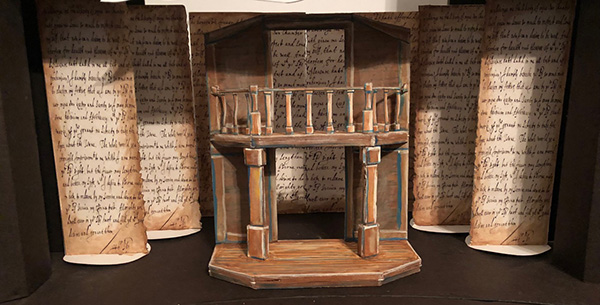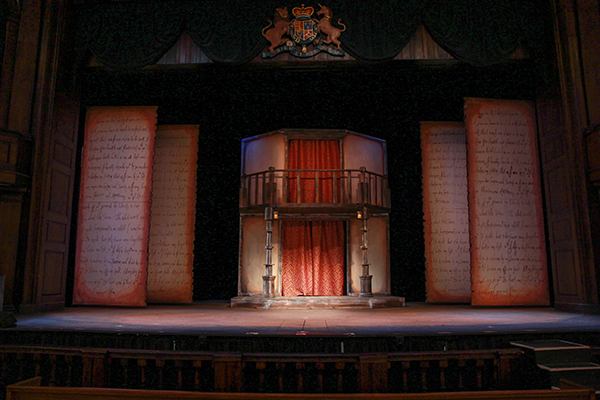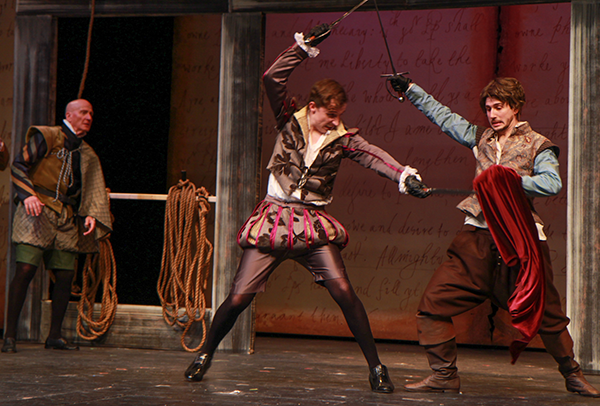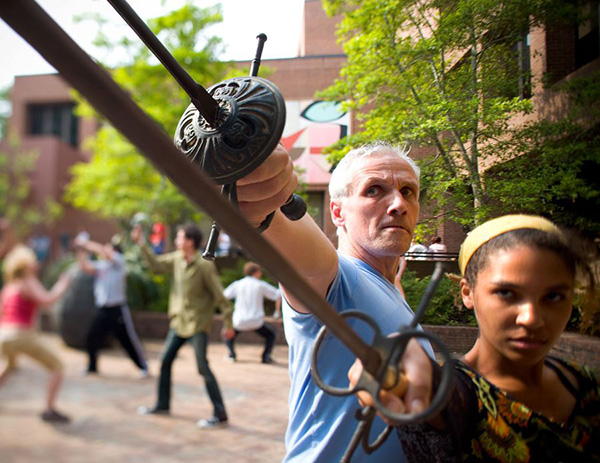By Grace Schmitz, Costume Design Coordinator/Senior Costume Technician


Serious planning for Shakespeare in Love began in the Costume Department at Charleston Stage as far back as October of this past year. We started by analyzing the script in depth and identifying each character that needed to be represented, that character’s historical background, and their status at the time of the play in Elizabethan England. I even initially created a flow chart of characters to help me visually map how each fit into this world and to mentally familiarize myself with them all. Once we were able to identify groups the color palettes began to come together, the upper class in their metallic gold and silvers and the lower class in their earthy rustic tones. We identified key scenes where we wanted certain characters to pop forward in the audience’s eyes, and where an actor was perhaps playing their third character and we needed them to blend more to support the scene. It was very important that Viola stand out above all as she is really the only character who is stepping out of the expected behavior in her environment. She is brighter than an other lady in the show which supports the scenes where several of the male characters are drawn to pick her out of the crowd.

With these story focused designs in hand we then moved to how to make it happen. The shop manager Gillian and I actually created 3 different budgets for the show utilizing 3 different plans of action from renting it all to making every single piece. The existing Charleston stage stock unfortunately didn’t have what was needed to produce Elizabethan characters, and there was a large need for new pieces. The best plan of action revealed itself to be a combination of sources which included help from The Oregon Shakespeare Festival, The College of Charleston, independent period costume makers from Etsy, and several costumes we would create from scratch in the costume shop. Overall there are over 200 costume pieces in Shakespeare in Love.
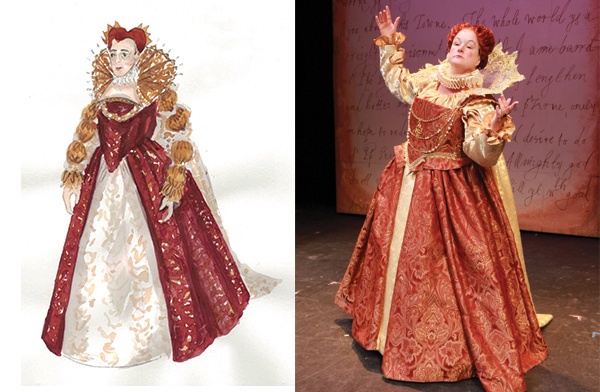
Many pieces from across the country arrived in Charleston throughout the spring and went through alterations and re-workings in order to create a cohesive world on stage. We also had the challenge of many of the historically accurate costumes needing to be reconstructed as functioning theatrical garments. These alterations included cutting additional openings, joining pieces that were once separate so they could all go on at once, and in many cases the addition of quick closures such as snaps and hidden zippers. We are so grateful for our volunteers Eileen McIntosh, Joanne Marcell, Fran Williams, and Kathy Honan for helping with all parts of these projects, as well as our TheatreWings students who made many of the hats. We could not have done it without you!






